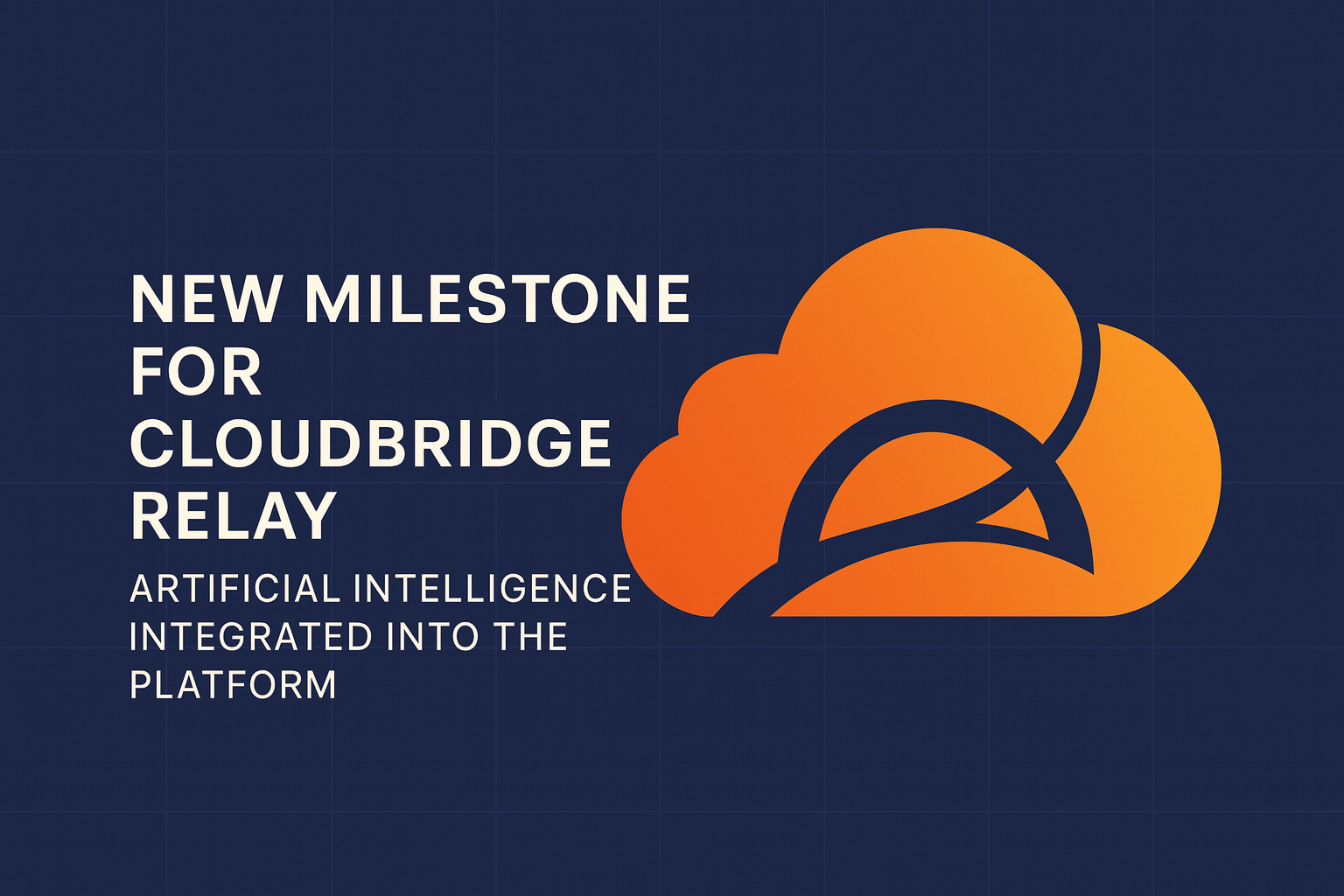AI in CloudBridge Relay: How Networks Self-Protect, Plan, and Accelerate
CloudBridge Relay uses AI to automatically detect threats, allocate resources, and select optimal routes, reducing risks and costs without manual routine.

AI in CloudBridge Relay: How Networks Self-Protect, Plan, and Accelerate
Core Insight: CloudBridge Relay uses AI to enable networks to automatically detect threats, allocate resources, and select optimal routes. This reduces risks, costs, and latency—without manual routine.
What AI Delivers
Preventive Security
The system analyzes traffic and behavior in real-time, identifies anomalies before incidents occur, classifies them (DDoS, intrusions, malicious activity), and immediately applies appropriate responses. The more data, the more accurate the protection.
Resource Planning
Based on historical data and seasonal patterns, AI predicts load and pre-allocates computing resources, channels, and connections. No overloads during peak times and no idle resources during “quiet” periods.
Intelligent Routing
Routes dynamically adapt to latency, packet loss, node load, and security requirements. Algorithms find the balance between latency, reliability, and cost.
Auto-Response
When threats are detected, the system blocks sources, isolates segments, redirects traffic, and escalates critical cases. After each incident, algorithms learn from their own actions.
How It Works
Multi-Level Data Processing
- Collection and preprocessing of metrics from interfaces, logs, telemetry
- Specialized models solve specific tasks
Models
Anomaly Detection: Isolation Forest identifies “unusual” patterns in traffic and behavior.
Load Forecasting: ensemble of ARIMA + neural networks + exponential smoothing for different time horizons.
Route Optimization: Multi-Armed Bandit and reinforcement learning for path selection in changing conditions.
Decision Making
Continuous monitoring, contextual analysis (time, seasonality, work cycles), and adaptive thresholds instead of rigid rules—fewer false positives, more accuracy.
Process Integration
Orchestration via Cadence
When an incident occurs, a workflow starts: context gathering → decision → action → result verification. The same pattern automates model training: data collection, preparation, training, validation, deployment, reliability monitoring.
Reliability by Default
Cadence retries failed steps and maintains consistency, so AI processes work stably even under load.
Continuous Learning
Continuous and Federated Learning
Models are retrained on new data; with federated learning, private datasets remain with their owners, only gradients/weights are shared—reducing leakage risks.
A/B Model Comparison
Parallel versions are tested on real traffic; the more effective one goes to production.
Business Benefits
Lower Costs
Automation of monitoring and response frees people from routine tasks and reduces OPEX.
Higher Performance
Smart routing and load planning reduce latency and stabilize SLA.
Enhanced Security
Proactive threat detection and adaptive thresholds reduce incidents and noise from “false positives.”
Future Development
More Advanced AI
NLP for logs, graph neural networks for complex topologies, computer vision for analyzing schemas and dashboards.
Hybrid/Multi-Cloud and Edge
Models closer to data sources—less latency, more resilience.
Open Ecosystem
Plugins and extensions for industry-specific scenarios—partners add their own models.
Conclusion
AI in CloudBridge Relay is not just automation, but a fundamental shift in how we think about network security and performance. The network becomes a self-learning system that not only responds to threats but anticipates them, optimizes itself, and continuously improves.
This is especially important in the Zero Trust era, when traditional security perimeters are becoming obsolete, and protection must be built into every network element. AI makes this protection not only more effective but also more adaptive to constantly changing threats and business requirements.
The convergence of AI, modern protocols, and Zero Trust architecture creates a new paradigm where networks are not just infrastructure but intelligent, self-managing systems that evolve with the threats they face.